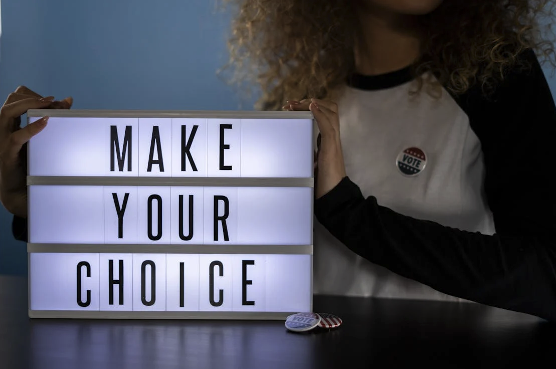
Credits: cottonbro studio
The upcoming presidential election still leaves some time for us to decide and for candidates to prove themselves. How can Vice President Harris and former President Trump increase their popularity? Obviously, by addressing the needs of struggling groups and promising to solve the issues they face. Students are a fundamental group whose interests can’t be neglected. They shape the future political landscape and can guarantee ultimate support. Or undermine it if the candidate is not to their liking. Let’s see how each candidate’s policies can solve current issues and impact the big picture.
Student loan debt increases annually, bringing questions about loan forgiveness. Is it even an option? Millions across the country hope so because the sums are hardly realistic. According to the Kiplinger article, average tuition and fees jumped by 65% during the last twenty years. Students choose to skip higher education not because they want to but because they can’t afford it. While services like EssayShark college essay writers offer professional academic assistance for a reasonable price, many similar initiatives are for chosen ones. What about federal student aid programs, do they actually aid somebody? Vice President Harris and former President Trump have different viewpoints.
For now, although Biden developed a student loan forgiveness plan in 2023, the initiative did not come to life. The plan was struck down by the Supreme Court, which closed several other similar initiatives. Remarkably, changes do not depend on a single person. No candidate can simply come and change the system. Nevertheless, 1 in 5 Americans mentions student loan forgiveness as a critical factor impacting their decision in the upcoming election. Candidates may have different opinions, but they equally agree that borrowers’ concerns must be addressed.
Despite the strong opposition, the Biden-Harris Administration has managed to implement several aid programs, addressing total debt. As a president, Kamala Harris intends to keep working on such policies since they directly impact the lives of millions. The ultimate goal is to provide students with the resources they need to develop their potential and find worthy employment. Of course, not everything is as simple in reality, so the administration targets particular areas of forgiveness. For example, some borrowers hold balances much greater than the initial amount borrowed, face financial hardships connected to emergencies, or have attended institutions that show low financial value. Some should be forgiven but still have not applied to the program, while others have been in repayment for more than twenty years.
Harris is likely to expand the Borrower Defense loan discharge. This is the initiative just for you if your college has failed to represent a particular detail that led to your enrollment. Income-driven repayment plans consist of four initiatives that define your monthly loan payment based on your current income and family size. Although the loan is not just forgiven, the repayment program correlates with reality as much as possible and sets reasonable conditions. Public Service Loan Forgiveness is a program for governmental employees and those serving non-profit organizations. The loan can be forgiven after 120 qualifying monthly payments or ten years of regular payments. Finally, Total and Permanent Disability discharge forgives borrowers with disabilities.
No place for discussions: Trump is against student loan forgiveness policies. While Kamala Harris is likely to design current initiatives so they can become widely accepted, Donald Trump won’t get involved in anything similar. Furthermore, he proposed considerable cuts to student aid programs during his presidency. He wanted to eliminate the Public Service Loan Forgiveness program and the Federal Supplemental Educational Opportunity Grant (FSEOG). The last one addresses the needs of undergraduate students who can’t afford proper education because of financial struggles. Students can fill out the application if their school participates and get financial aid. The grant offers between $100 and $4,000, no need to repay. Sounds useful? Trump does not think so.
Although Donald Trump has not made a specific statement about loan forgiveness initiatives, he does not hide his skepticism. He views plans of the Biden-Harris Administration as “vile” and “not legal.” believing that they are meant to be shut down by the Supreme Court. How can they talk about forgiveness, which they can never guarantee? To him, such policies hardly correlate with reality. Limiting the amount of money students and their parents can borrow is much more logical.
It seems students can count on supportive programs with Kamala Harris as a president. She clearly intends to make current loan forgiveness initiatives widely accepted and contribute to education’s affordability. Meanwhile, Donald Trump sets priorities differently. He cuts student aid initiatives and offers to set borrowing limits. He’ll have to reckon with student communities’ interests, but this may be a fierce battle.